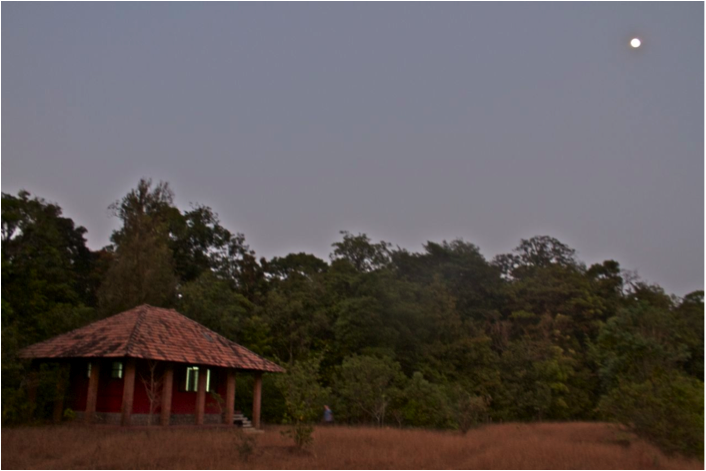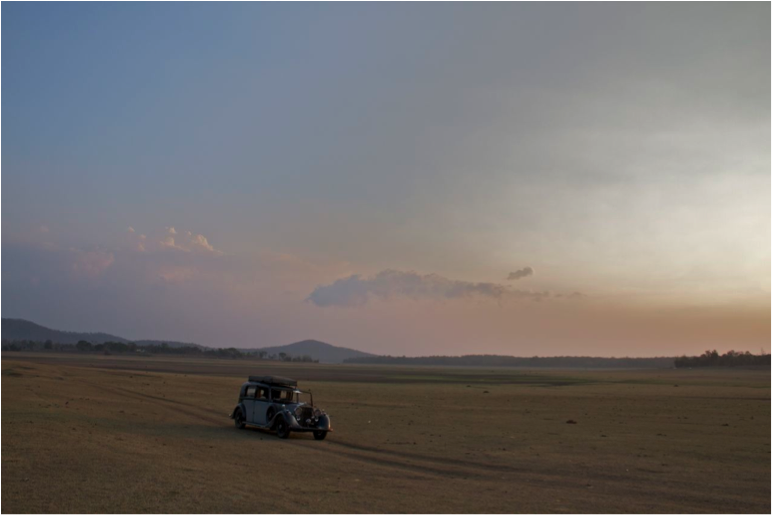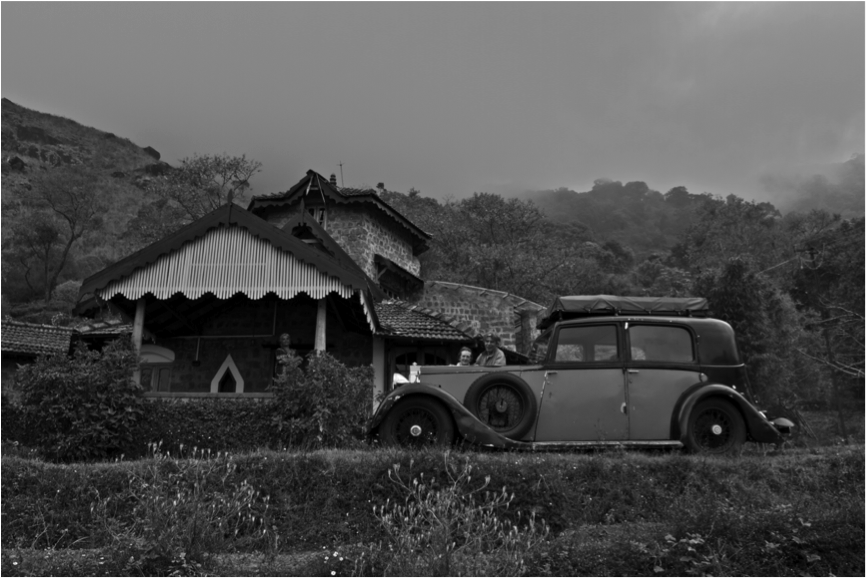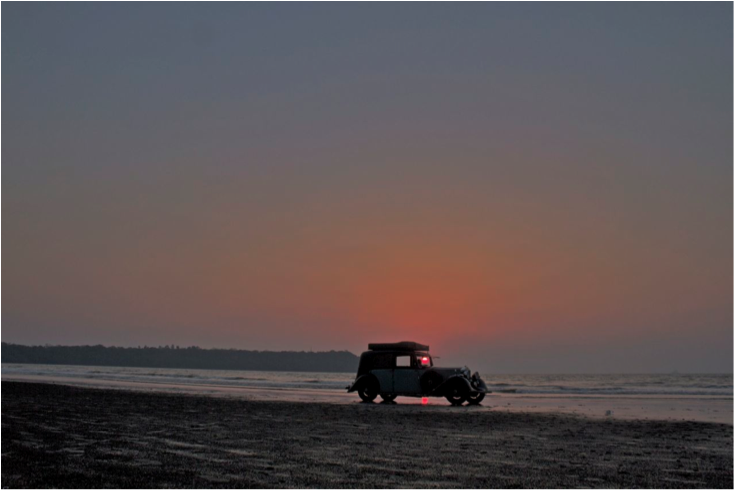5th Letter from India
The South
The choice, when we planned our journey from Bombay to Bangladesh, was to motor north through Rajasthan and East along the foothills of the Himalayas, or south through the Western Ghats to Kerala and up the Eastern seaboard through Calcutta. Most of our friends, both here and in the UK, urged us to go south. It was winter in the north, they said, and the roads were rougher; there was no tourist infrastructure east of Agra; dacoits and sundry villains lurked beside rural roads at dusk in Uttar Pradesh and Bihar. The south, on the other hand, was warm and welcoming and had agreeable hotels.
In the event we went North, as those of you who have read the earlier letters on this page will know. The plan was to ship the Rolls home from Calcutta. By the time we got there the notion of returning to Bombay through South India was surfacing in both our minds, for the lure of the Western Ghats was strong. And the Rolls, in spite of its Bangladeshi tribulations, was singing like a sewing machine.
In Calcutta we took a room in the Bengal Club. It was spacious, old-fashioned and opened onto a wide balcony and sat down to review our options. On the 2nd night we hung a large map of India on the balcony wall and opened a bottle of Sula wine. By the end of the bottle the most attractive option was clear: truck the Rolls to Bangalore, spend a month meandering across the Nilguri Hills and up the Western Ghats and get to Bombay with enough time to get the better of the Customs babus before our visas expired.
Oliver, who contemplated this decision-making process with a film-maker’s eye, volunteered to ride with the Rolls. This settled the matter. Finding a reliable carrier in the City of Joy, however, was far from easy. I kept forgetting that nothing is what it seems in this wonderful country. Without friends in the vintage car fraternity in Calcutta it wouldn’t have happened.
We got to the truck depot on the outskirts of Calcutta late one afternoon. It did not fill us with confidence. It looked more like a truck graveyard. Teams of oxycetaline torch wallahs were cutting up dilapidated container-trucks for scrap. Amongst them was the one assigned to the Rolls. It was more rust than metal so I rejected it. It was, I noted later, put out for the torch-cutters.
The rack hydraulics on the second one were kaput, which meant the vehicle inside would travel at a 30 degree angle. I had no idea whether old Rollses minded that sort of treatment, nor had I ever driven the Rolls up a 30 degree slope. Aside from that it looked OK. I drove it in and supervised – very carefully – its tying down. By then it was dark, and Oliver went off into the Indian night with an ancient Rolls, $20K’s worth of camera equipment, no food, no spare clothes and no seat. The journey was 1700 miles, would take 5 days and the driver spoke not a word of English.
Jan & I, however, enjoyed excellent seats on the train to Bangalore. They turned into beds when it got dark, and we thundered through Orissa in the warm night reading books, getting up occasionally to stand by the open door and watch the tree-shadows cast by the moon flashing past. At the station we were greeted by a cock-a-hoop Oliver in possession of an undamaged Rolls and a new Royal Enfield motorbike. Henceforth the Rolls had an out-rider in blue jeans, a white shirt, black film-director stubble and a red bandana. No nonsense about a helmet or anything.
The cavalcade moved to Mysore, where Tipoo Sultan died fighting the British a little over two centuries ago. I had a picture in my mind of the scene of his death, speared by a jubilant redcoat in the gate of his castle during the battle of Seringapatam, based on a painting in a book I read as a child. He was billed, as I recall, as a thoroughly bad hat. Back then it hadn’t occurred to me that history is written by the victor and not always accurately.
The place in which we stayed, a minor palace built by the Maharaja for his unmarried sisters in 1900, had a library. In high-ceilinged marble-floored rooms, with sunlight filtering through the shutters, I researched Tipoo Sultan’s life and times and death. The truth, it turns out, was not what the victor said at all. Tipoo was an outstanding ruler who was ahead of his time. He understood modern statehood and economics better than any of his Indian contemporaries. Mysore, and its arts of which he was a great patron, flourished under his rule. His treatment by the British was, even by the standards of the day, disgraceful. It was also extraordinarily foolish: he could have been a formidable and useful ally.
We sallied forth to the battlefield, where his castle, built at the confluence of two rivers which flow from the Western Ghats, still dominates the landscape. We found a guide who informed us that our hero was India’s first freedom fighter and escorted us along the castle walls to a large concrete plinth announcing Death-Place of Tipu Sultan.
This was wrong – it was where his body was identified after the battle – but no matter. He was slain under the arch of the Watergate, so called because it led under the castle walls to the river. Our guide took us to the gate. The place where he fell is unmarked, but it has a haunting beauty. The rivers still flow below the castle walls, and women spread their saris out to dry on ruined battlements, lying where they fell to British guns 200 years ago. It was quiet, for there were no visitors, save possibly the occasional snake coming to pay its respects and bask on the altar stone of the snake temple which lies in the shade nearby.
Snakes were on our agenda and Agumbe, high on a plateau in the Western Ghats, is a gathering ground for King Cobras. Their rainforest habitat is disappearing as the human population grows and tolerance for ostensibly dangerous wildlife declines. As tigers are to mammals King Cobras are to reptiles: they are both dangerous, both under threat and both flagship species. But cobras have something tigers don’t: iconic status in the diverse pantheon of Hindu Gods.
And they are longer than tigers. Ten foot is normal for a King Cobra, 15 foot not infrequently. They are the only snake which builds nests for its young, which it does at the end of March just before the monsoons – a five foot high pile of dry vegitation at the heart of which is a waterproof temperature-controlled chamber in which the eggs hatch. Cobras, it appears, can do what most people can’t: build a water-proof house for the monsoon rains. The female hangs around for a month till they hatch and then disappears. The young, perhaps 9” when born, emerge after about a week.
We were introduced to Siddarth Rao, the Director of Research at Agumbe, by Raghu Saxena, who heads Earthwatch India (Jan & I are on the UK advisory Board). We walked and talked, about conservation, funding, snakes, national parks and Naxalites, for whom national parks are useful places to keep out of the way of the police. Wildlife and conservation are his life; he wrote his masters on the competition for space between tigers, leopards and wild dogs. Cobras are also competing, mainly with humans.
The research station is privately owned and funded – rare in India – and constitutes a corridor between key conservation areas in the Western Ghats, now regarded as one of the world’s most important centres of biological diversity.
We stayed in a house built of local stone and red tiles. It had one room, a bathroom and a verandha where we sat and wrote and read and watched butterflies. It stood , quite alone, in a clearing in the forest. There was no sound save the song of the laughing thrush and the humming of bees. The grass was brown, for it was 5 months since the rains, though it was wet with dew in the early mornings. Terraced rice-padis, long since fallen into disuse, fell away gently to the forest a hundred yards away. In the monsoons they fill with water and become a huge breeding space for frogs, the place is transformed into wild green growth, bamboos grow half a metre a day, vipers hang off the eaves and the forest is alive with life.

Moonrise at the little house in the clearing at Agumbe
Unlike our journey across the north we planned our southern travels as we went. The only rule was to know where we going to spend the night before we set off in the morning. Guide-books, save Sawday’s, were not very helpful. Fellow travellers were.
In Ooty we fell into company with a retired brigadier and his companion who had seen the Rolls. This led us to a delightful lodge in Nagarhole National Park where Dan the assistant manager was an English guitarist looking for new adventures. He loved what we were doing. One evening, standing on the running board of the Rolls, he guided us across the plains under a darkening sky to a river where a chap with a paddle in a round plastic coracle transported men with motorbikes and women with children and chickens to the other side.

The darkening sky over the plains In Nagarhole
One morning we went on what Nagahole National Park calls a safari and tourist literature describes as “close encounters with wildlife”. There were several jeeps. It lasted 2 hours. In due course we saw a sleeping tiger with twitching ears. One of the drivers pressed his horn. Not surprisingly the tiger woke up. This was a clear transgression of the boundary between observing wildlife and disturbing it. Given the constant hikes in park fees for foreigners – £20 per hour in the park – it is bound to happen. But it’s a bit close to voyeurism for our taste.
Jan’s leather suitcase was also a conversation-starter. A distinguished Indian with a tidy white beard and an olive green kurta spotted it in our hotel in Mysore. On the assumption that its owner might be interesting he engaged Jan in conversation. By the time I turned up pots of coffee were on order and the conversation flowing.
He was a director of the Hotel and for many years on the board of Oxfam. The profits from the hotel funded a school for tribal children which he had founded some years before. The school was on our way north and so was his house. He wouldn’t be there, but his American sister in law would. We visited the school, by which we were excited and much enlightened, stayed in his house, which was a place of magic high in the Niligiri Hills, and dined with his sister-in-law, who is an exceedingly fine cook.

The house high in the Nilgiri Hills
After about a fortnight we saw the Arabian Sea for the first time since we left Bombay 5 and ½ months before. It was an exciting moment. We motored down the hills to the shore and over the long wide sands, and swam in the warm waters. We had crossed the continent twice and it felt good.
We celebrated over a fine dinner at the Panjim Inn in Goa, and stayed there for 4 days wandering around old Portuguese mansions and 17th century churches before heading north to Bombay.

By the Arabian Sea
